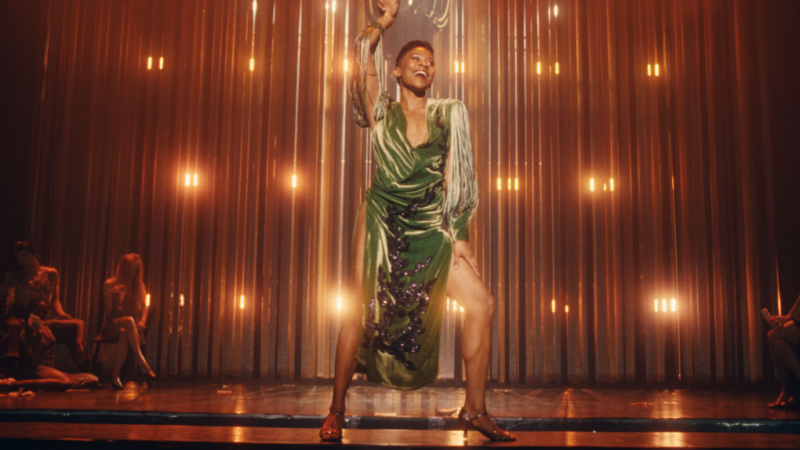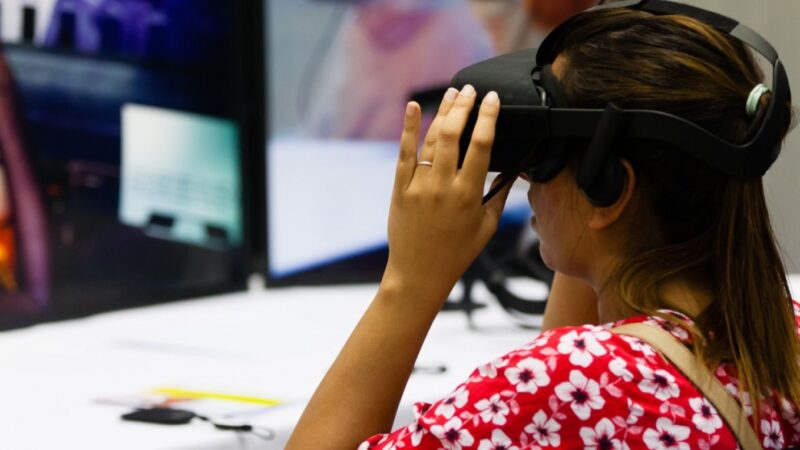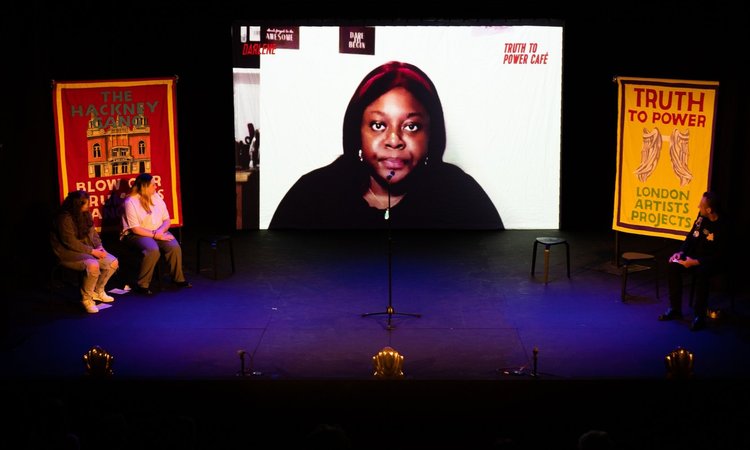How do you expand the audience for a spectacular piece of site-specific public art through digital channels? This case study explores how Artichoke grew a live audience of 50,000 people watching their astonishing artwork London 1666 burn on the Thames to digital and broadcast content with a reach of 6.7m. Here we share how they did it.
Introduction
Artichoke specialises in staging site-specific events that aim to engage the public in art. In 2016, the company produced a week-long festival to mark the 350th anniversary of the Great Fire of London. Its climax was London 1666, an artwork created by ‘burn artist’ David Best: a 120m-long replica of the 17th-century London skyline fixed on a barge that was set alight on the Thames.
Young people and other members of the local community had worked on the sculpture and it promised to be an open-air spectacular that would engage audiences far beyond gallery-going types. Indeed, by the time it approached The Space, Artichoke had already partnered with promotional agency Visit London to tap into its huge domestic and international following for the project.
The Space commissioned digital content around London 1666 under both its Capture and Extend strands. The objectives were:
Capture:
- Greatly expand the audience for the project. The maximum capacity for the live audience to see London 1666 burning from both sides of the River Thames was 50,000 and Artichoke wanted it to reach the widest audience possible. In all its work, Artichoke challenges itself to reach the biggest and broadest audiences it can and in this case, digital was the means of doing that.
- Reimagine the experience for digital viewers. Artichoke and its production partners challenged themselves to see how they could make the experience different – and perhaps even better – for online audiences.
- Archive London 1666 in an interesting way. As Artichoke’s work is largely public art that is ephemeral in nature, the company are keen to find ways to archive its work in a fitting way.
Extend:
The Space’s Extend strand aims to deepen audiences’ understanding of art.
- Contextualise London 1666 and engage audiences with different aspects of its history, science and craft and use these stories to develop interest from new audiences in the project.
This case study is based on interviews with The Space’s Commissioning Executive Helen Spencer, Artichoke’s Director Helen Marriage, Artichoke’s Digital Communications Manager JoJo Tyhurst and The Space’s Head of Audience Development and Distribution Owen Hopkin.
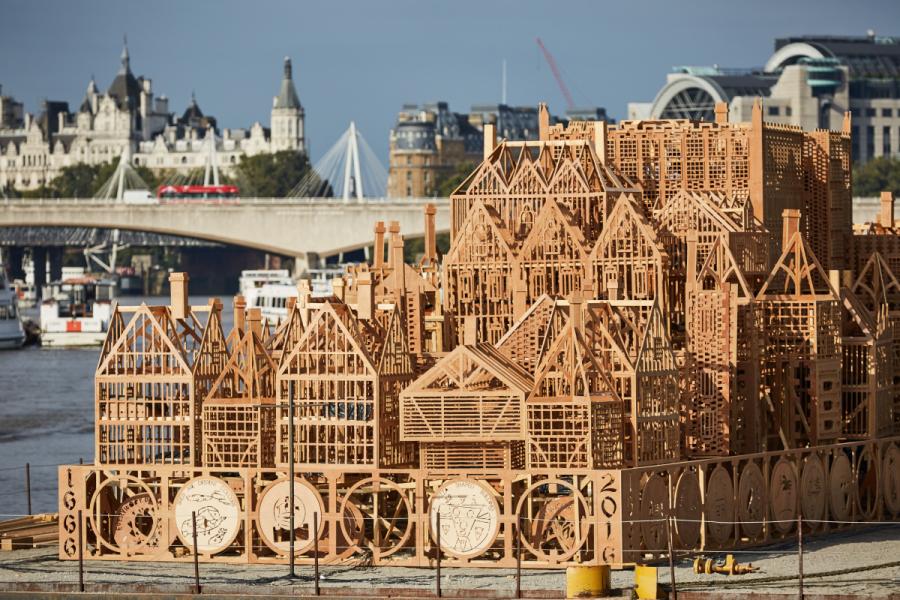
Approach
Expanding the team and expertise:
With The Space commission, Artichoke was able to increase capacity by bringing on a capture team including a producer, production manager, assistant producer and assistant. This production team was led by producer Pete Nichols and was tasked with creating content for a digital livestream and for an edited version of the livestream to be broadcast on BBC Four. Artichoke also brought a social media specialist on board to post on Twitter, Facebook and Instagram in the run-up to the event as well as during the burn. Bringing on more resource and careful resource planning was essential for Artichoke, who also had the entire week-long festival to manage.
Together, Artichoke and the production team planned both the digital content they needed ahead of the event for marketing and for the livestream itself, which took the shape of a magazine programme with interviews, short films and live coverage of the burn.
This chance to share the story around London 1666 through the livestream was particularly exciting for Artichoke. The company’s director Helen Marriage said: “It offered an interesting way to communicate the depth of the project and its context. That’s what we never usually get to do – we see the amazing impact that our projects have on people during their creation but the audience only ever experience the finished work. The live stream gave us that real opportunity.”
Artichoke’s Digital Communications Manager JoJo Tyhurst said that working with external producer Pete Nichols was a good learning experience for the company because it made them look at the project afresh and think again about its appeal for different audiences. JoJo added that because BBC Four commissioned a cut down version of the livestream, the format of the livestream had a very ‘television’ feel. She said that she thinks that if the company was doing a digital-only livestream in future, they could be more experimental with the shape it took.
The team then created a schedule for capturing the footage required for marketing and for the wraparound content aimed at contextualising London 1666. A crew were dispatched to the site of the London 1666 build to film the build and those working on it.
Filming logistics:
Meanwhile, the production team also started planning how to film London 1666 itself. There were lots of logistical challenges to filming the piece, including the health and safety demands of working with both fire and water, and arranging filming permissions with multiple local authorities and private owners for the various stretches of river bank where the team wanted camera positions to capture the action. For this, the team were able to tap into the contacts and relationships that Artichoke had already established with location contacts along the Thames banks.
One major logistical learning point for the company around the wraparound content was television release forms. Everyone who appears on television (as a contributor, rather than audience or in the background) must sign a release form and these are more complicated for young people and require the consent of a parent or guardian. Artichoke started this process late and JoJo described how challenging it was finding out at that stage that some people could not be filmed.
Helen Marriage, Artichoke’s Director, also said arts organisations should be aware of the “burden of administration” around television production.
Finding the right presenter:
Lauren Laverne was the presenter for the livestream – as JoJo Tyhurst said: “She was absolutely our first choice because she’s contemporary, accessible and a well-respected arts presenter.” The team were not sure she would be available so while they were waiting to hear back, they canvassed other options but no one else felt such a good fit. JoJo said for any arts organisation looking for a presenter to think carefully about who best chimes with their work and, that in Artichoke’s case, “We were very, very lucky”.
Music:
Artichoke commissioned music for the first time for the livestream of London 1666. In the past the company have always worked with existing music but JoJo said having bespoke music designed specifically for the digital capture of this project made a real difference. JoJo said: “It was a really positive experience for us and really elevated what we produced. I would advise other arts organisations to consider commissioning new music for their work as in our case it was really worth the investment.”
Choosing the right format and platform for your audience:
For the livestream, the team initially wanted viewers to have an interactive experience and be able to choose between different streams with different content and angles of the burn. However, this original plan was dropped when they realised how much data would be required. This would have made it very difficult for audiences to view it on their mobile phones or tablets, which they estimated would be half their audience. Being able to view the content remotely and on a range of devices was key for Artichoke so this plan was dropped in favour of a single livestream. The Space’s Commissioning Executive Helen Spencer said: “Think about your audience’s viewing habits and be sympathetic to your viewers’ platforms and needs.”
The team also made sure that the pre-recorded content would be captioned. As JoJo explained: “People won’t necessarily have sound on when they are watching digital content so make sure you think about captioning, or consider content which doesn’t feature speech at all.”
Artichoke did not want to put all their eggs in one basket by livestreaming only on one platform, so the stream was broadcast both on Visit London’s YouTube and its Facebook page using Facebook Live. The Space’s Head of Audience Development Owen Hopkin explained that people’s habits across the two platforms are different, with people more likely to make ‘appointment viewing’ on YouTube and more likely to stumble across content on Facebook. Streaming to both worked well for this project, with good audiences across both platforms (see below).
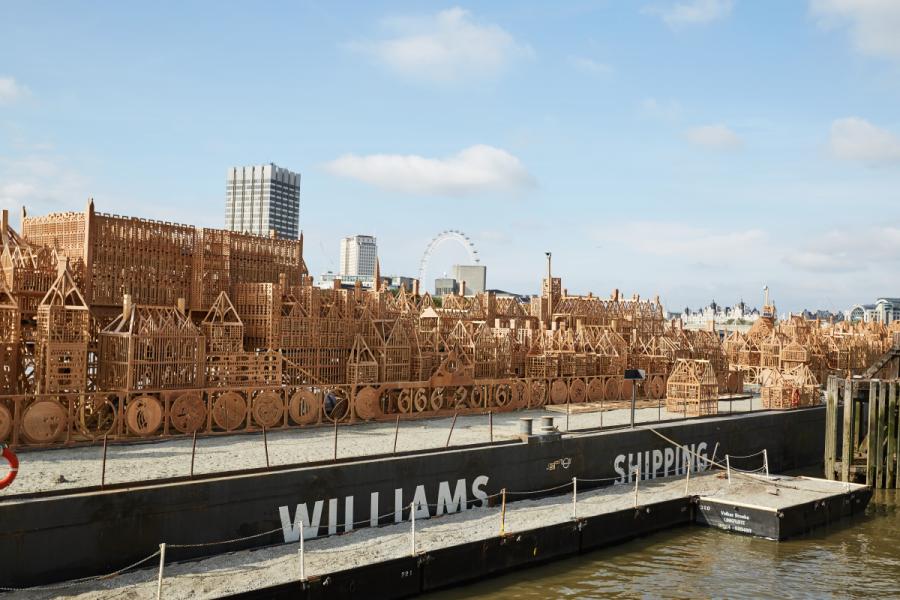
Social Media:
JoJo described the experience of the live event: “During the burn social media went so crazy, you couldn’t keep up with it.” The hashtag #LondonsBurning trended on Twitter and JoJo was able to post things but couldn’t respond to people’s tweets in the way she usually would during a live event. The Space’s Commissioning Executive Helen Spencer said it can be useful for arts organisations to think through whether, if their project gets interest beyond their wildest dreams, there is capacity to interact with audiences on social media in the way they would like to?
The enormous social media response flagged up that some audience members felt they were not seeing enough of the burn. Artichoke worked to fix this by publishing a ‘burn-only stream’ the day after the event, and ensured there was more footage of the burn in the edited cut down of the livestream on BBC Four. JoJo said it is important to think about the balance of the content and how dominant the wraparound content is.
Although this was a large-scale project with a substantial TV and digital crew, JoJo was keen to emphasise that another organisation could easily take elements of it and do it in a more lo-fi way – “after all, you can livestream using a phone”.
Engaging the audience:
By partnering with Visit London, Artichoke harnessed the potential of an organisation with huge international reach and well-established digital and social media platforms. Both The Space’s Commissioning Executive Helen Spencer and Head of Audience Development Owen Hopkin commented on how great this partnership was for finding and engaging audiences and delivering enormous viewing numbers.
London 1666 was livestreamed on Visit London’s YouTube and Facebook Live channels. It was later put onto Artichoke’s own YouTube channel and a cut down of the livestream was broadcast on BBC Four, and was available for 30 days afterwards through BBC iPlayer. It was picked up by organisations around the world and B roll was packaged and syndicated internationally.
With this platform established, the main thrust of the engagement strategy was to work to create a campaign to build anticipation for the event before the livestream and extend its reach after the event. Ways of doing this included:
- Releasing short videos in the run-up to the event to build excitement around the project. During the two weeks before London 1666, Artichoke released a short video every day. They paced these to develop the story and bring in audiences. In the first week these were largely mysterious, teaser videos of 30 seconds or less to intrigue audiences, such as close-ups of the build, trailed with their ‘Watch it burn’ ident. In the second week, they offered more explanation around the piece.
In retrospect, Artichoke feels that a video a day was not necessary and put a lot of pressure on the team to deliver. In fact, other content such as images or quotes could have worked well amongst some videos in the fortnight lead-up. JoJo also feels that, as the project offered lots of opportunities for young people, they should have led with some of these voices on social media – but that this is a learning experience for future.
- Using the various angles of the project and curating them into different ‘streams’ of content – under the titles ‘history’, ‘science’ and ‘art’ and creating content around these strands to be seeded on a wide range of targeted sites and publications in order to make the project appeal to the widest possible audience.
- Artichoke’s own social media channels had relatively modest numbers of followers so the marketing team mixed organic posts and paid-for posts on social media in order to give them bigger prominence online. Owen said: “Posts were boosted with modest sums of money (£10-£50), but found significant and relevant audiences through the user-friendly Facebook ad functionality.”
Outcomes:
The project had a remarkable and enormous international reach and overall, with audiences of 3.8m viewing the burn and the wider content created around London 1666 reaching 6.7 million.
Furthermore, a month-on-month comparison of Artichoke’s social media channels reveals significant increases in their reach, measured by the metrics below.
London 1666 was held on 4 September 2016. These statistics show increased activity on Artichoke’s channels from 18 August-17 September 2016 with the previous month, 18 July-17 August 2016.
Facebook:
- Fan increase: 14.09%
- Reactions to Post: 1670.87%
- Comments on Posts: 2381.25%
- Shares of Posts: 827.94%
*Fan increase is the rate of change of followers i.e. growth of previous month vs growth of current month
Twitter:
- Followers:* 12.62%
- RTs: 1158.14%
- Favourites: 1894.37%
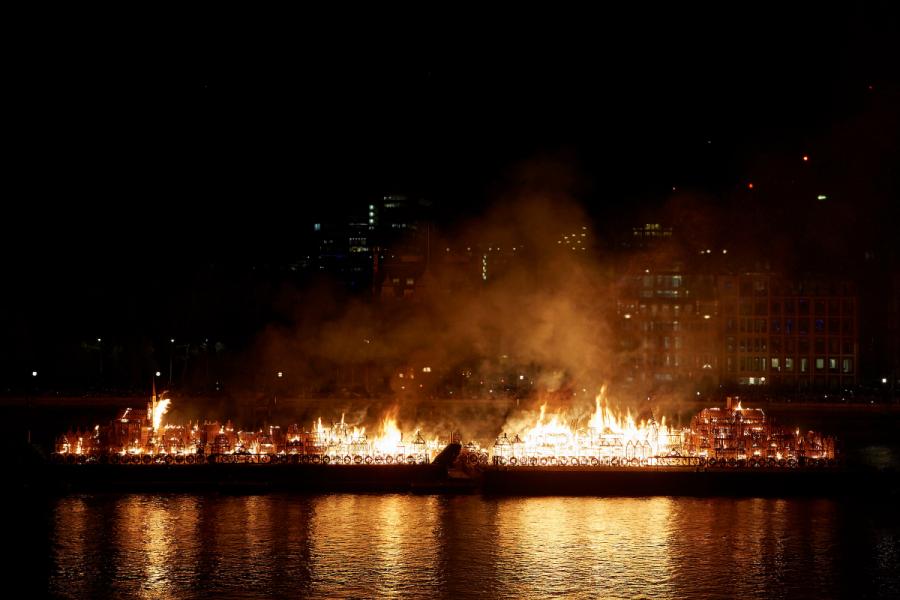
Top tips:
- Partner with another organisation with a big online audience and use their channels as your platform.
- Consider bringing in people with an external viewpoint and expertise beyond what you have in-house – it can be a rewarding experience.
- Seek out a presenter that chimes with your content.
- Consider commissioning new music if you feel it would make a real impact to your piece.
- Develop a process for obtaining release forms at the earliest stage so you know who can and cannot be filmed. This is especially important if you are featuring young people in your content. Photos of people holding their names up is useful if you are working with lots of contributors so you know who is who.
- Think about how your audience will be viewing your content and tailor its packaging accordingly – think about data requirements, and think about something that works without audio or you can caption if you expect people to view on mobile devices.
- Build a strategy for marketing content that is manageable to deliver – you don’t need to upload a video every day, other types of content such as images, blogs or tweets can be as effective.
- Prepare for some negativity if you are engaging with social media during the livestream of your project.
- If you want to engage with social media during the live stream or broadcast of your show, make sure you have the capacity to deal with the responses if it goes viral.
Quotes:
“Of everyone here, I am the least interested in digital, I am focused very much on the live event. But this certainly changed my mind – digital can give a deep and profound experience to audiences. I still want people to come to the live event but realise that if they can’t or want more, online has something to offer.” Helen Marriage, Director, Artichoke
“This is by far and away the project that has had the biggest reach. And that was partly because we had people filming it, so we had incredible footage we could share. We have ambitions to livestream an event again, although perhaps in a different way. It has given us confidence and contacts.” JoJo Tyhurst, Digital Communications Manager, Artichoke
Links:
Short videos – released during the run up
Visit London – Burn videos
Highlights of the burn – on BBC Arts Digital
About Artichoke:
Artichoke is a creative company and registered charity that works with artists to invade our public spaces and put on extraordinary and ambitious events that live in the memory forever…
Want to read more? For more case studies and articles about recent Space commissions or wider resources about producing work for digital platforms and growing your audience online visit our resources section.
- How can arts organisations ensure their work is accessible? Find out
- Making immersive theatre for TV – How Streetwise Opera did it
- Complicite took The Encounter to a whole new audience – Discover how to live stream
How useful was this resource?

